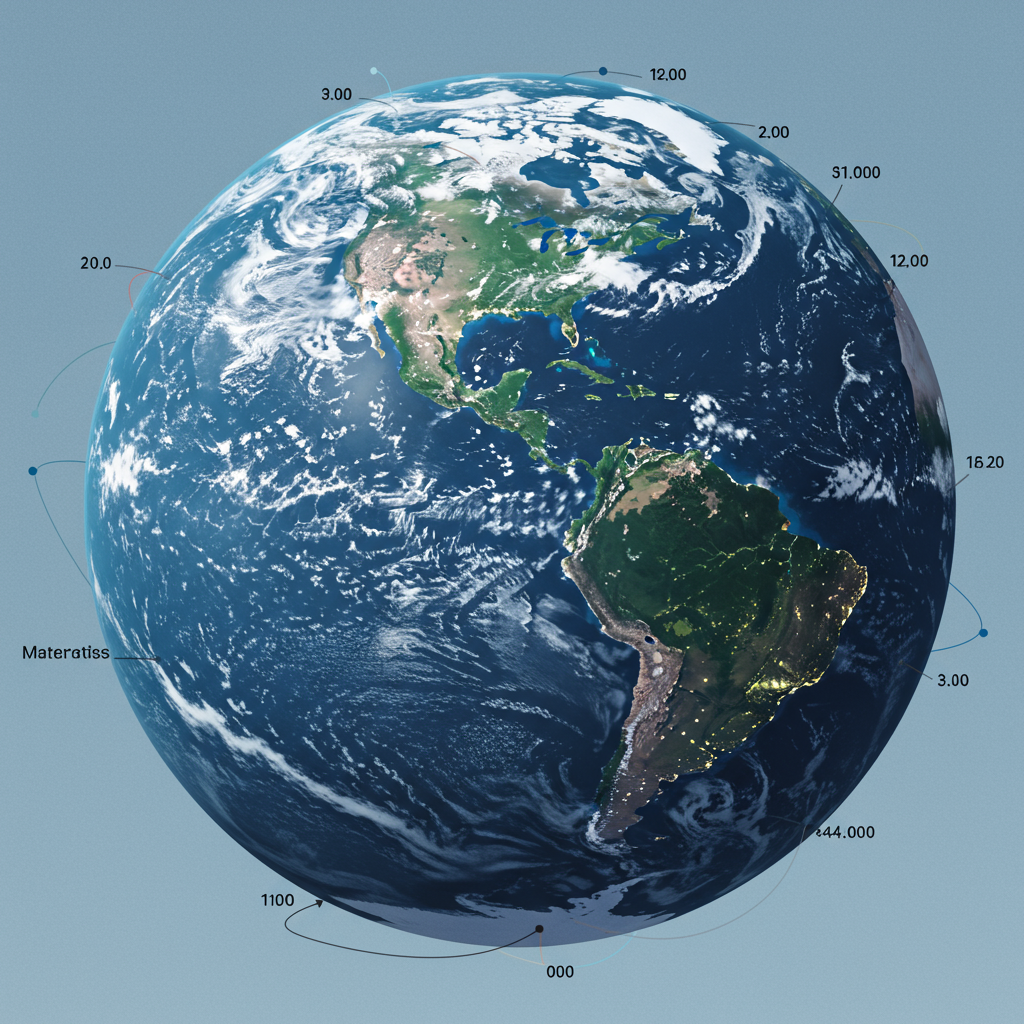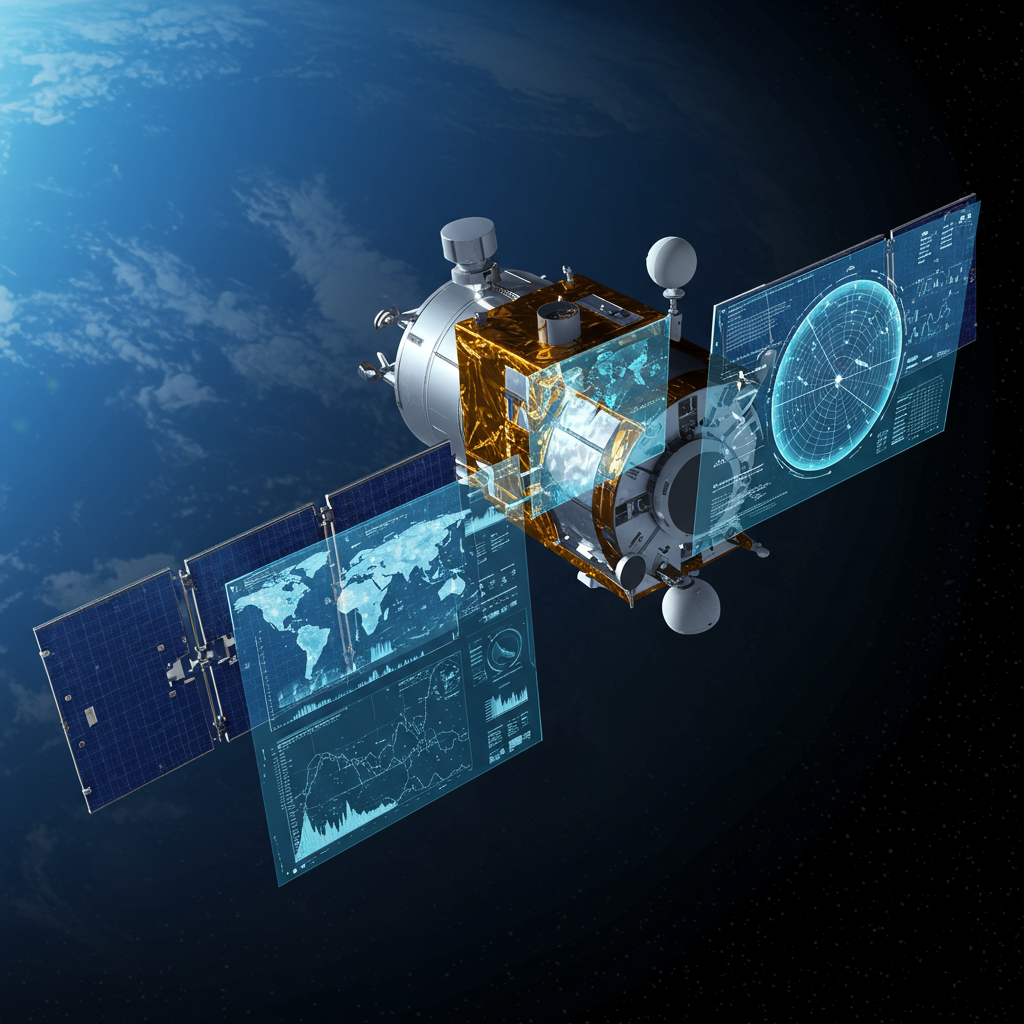scientists are tracking a surprising phenomenon: earth’s rotation is unexpectedly accelerating. This subtle but significant shift means our planet is completing each turn slightly faster, potentially leading to the shortest day in recorded history within weeks. Experts admit they don’t fully understand why this acceleration is happening, adding an element of mystery to the precise science of global timekeeping and navigation. While the change seems tiny – just milliseconds – it has the potential to impact the sophisticated systems our modern world relies on, from GPS to satellite communications.
The Mysterious Acceleration of Earth’s Spin
For billions of years, Earth’s rotation has been gradually slowing down. This deceleration is primarily caused by the gravitational pull of the Moon, which affects tides and subtly drags on the planet’s spin. This long-term process is what has shaped the 24-hour day we experience now, stretching it out over eons.
However, since around 2020, scientists have observed a reversal of this trend. Earth has begun spinning slightly faster than usual. This unexpected speed-up has puzzled researchers. As Leonid Zotov, a scientist from Moscow State University, noted, “Nobody expected this, the cause of this acceleration is not explained.” This observation challenges current models of how Earth’s rotation typically behaves.
Predicting Potentially Record-Breaking Days
Astrophysicist Graham Jones at the University of London is one expert monitoring this acceleration closely. Based on current data and models, Jones has identified specific dates this summer when Earth’s spin could speed up noticeably. He predicts potential significant changes on July 9, July 22, or August 5, 2025.
On these predicted dates, the length of a day (LOD) could decrease by 1.30, 1.38, or 1.51 milliseconds, respectively. To measure these minuscule variations, scientists use highly accurate atomic clocks. These clocks track time with incredible precision, allowing experts to record the exact duration it takes Earth to complete one full rotation, down to the millisecond level. The standard solar day is defined as precisely 86,400 seconds.
The Earth has already been breaking records for shortest days since this acceleration began. In 2020, July 19 was 1.47 milliseconds shorter than average. July 9, 2021, saw the same 1.47 millisecond reduction. A new record was set on June 30, 2022, when the day was 1.59 milliseconds shorter. The fastest day recorded prior to the upcoming predictions was on July 5, 2024, shaving off an unprecedented 1.66 milliseconds from the 24-hour norm. Multiple days in 2024 were among the shortest ever measured.
How Length of Day (LOD) is Tracked
Length of Day (LOD) is the precise measurement of how long one Earth rotation takes, relative to the standard 86,400 seconds. Atomic clocks provide the ultimate standard for timekeeping, while observatories and international services measure the actual LOD. A positive LOD means the day is longer than 24 hours (Earth is slowing), while a negative LOD means the day is shorter (Earth is speeding up). The recent measurements show a persistent trend of negative LOD values since 2020.
Exploring the Potential Causes
Earth’s rotation isn’t perfectly constant. It naturally fluctuates by tiny amounts – just a few milliseconds – influenced by various geophysical and atmospheric factors. Scientists know that events like large earthquakes can redistribute Earth’s mass and affect its spin. For instance, the powerful Magnitude 9.0 earthquake off the coast of Japan in 2011 shifted enough mass to alter Earth’s axis and slightly shorten the day.
Other factors known to influence rotation include:
Movement in Earth’s Molten Core: The swirling liquid metal in the planet’s core is constantly shifting. Like a figure skater pulling in their arms to spin faster, changes in mass distribution within the core can affect the planet’s overall rotation speed.
Ocean Currents and Sea Levels: Large-scale movements of water, including major ocean currents and even changes in sea level due to melting glaciers, can subtly redistribute mass on the planet’s surface.
Atmospheric Winds: High-altitude winds, like jet streams, also move vast amounts of air mass around the globe, contributing to small rotational variations.
Large Weather Patterns: Phenomena such as El Niño can influence atmospheric and oceanic circulation, impacting Earth’s spin.
However, the recent, consistent acceleration since 2020 is not fully explained by current models of the atmosphere and oceans alone. Researchers are intensely investigating what might be causing this particular trend. The focus is increasingly on complex interactions within Earth’s interior, particularly the dynamics of the molten core. Interestingly, some predicted dates for extreme short days in 2025 coincide with the Moon being furthest from Earth’s equator, suggesting a potential, though not fully understood, lunar connection alongside internal factors.
Real-World Impacts: More Than Just Milliseconds
While a change of 1-2 milliseconds in a day might seem insignificant, it has crucial implications for modern technology. Many global systems rely on incredibly precise timing, synchronized down to fractions of a second.
Technologies affected include:
Satellite Navigation: Systems like GPS depend on the exact timing of signals from satellites, which are synchronized with Earth’s rotation. Even a slight discrepancy can lead to errors in positioning.
Telecommunication Networks: Phone networks and data transfers require split-second synchronization for seamless operation.
- Financial Markets: High-frequency trading and financial transactions require atomic clock precision.
- www.unilad.com
- www.uniladtech.com
- dailygalaxy.com
- www.dailymail.co.uk
- m.economictimes.com
The world currently manages time using Coordinated Universal Time (UTC). To keep UTC synchronized with Earth’s slightly irregular rotation, adjustments are occasionally needed. Historically, Earth’s rotation has generally been slowing, so UTC is sometimes adjusted by adding a “leap second” to the end of a year or half-year.
However, if the current acceleration trend continues, scientists may face an unprecedented situation. Instead of adding a second, they might need to subtract one – a negative leap second. This has never happened before and could pose technical challenges for systems not designed to handle time subtraction.
Frequently Asked Questions
What exactly is the “shortest day” scientists are predicting?
The “shortest day” refers to the shortest duration Earth takes to complete one full rotation on its axis, measured against the standard 24-hour day using incredibly precise atomic clocks. While a standard day is 86,400 seconds, Earth’s actual rotation time fluctuates by milliseconds. Scientists measure this fluctuation as “Length of Day” (LOD). A negative LOD means the day is shorter than 24 hours. Scientists predict upcoming days in 2025 could have LODs as short as -1.51 milliseconds, challenging recent records.
Why don’t scientists know for sure why Earth’s rotation is speeding up?
Scientists know several factors influence Earth’s spin, including internal core movements, ocean currents, winds, and even earthquakes. However, the consistent acceleration observed since 2020 is not fully explained by their current atmospheric or oceanic models. Researchers like Leonid Zotov and Graham Jones are investigating complex internal Earth dynamics and potentially other factors, but the precise cause of this specific, recent speed-up remains a mystery under active study.
Could Earth’s faster spin affect daily life or technologies like GPS?
Yes, while the change is only milliseconds, it can affect technologies requiring extreme precision, like GPS, satellite systems, and high-frequency financial trading. These systems rely on synchronization with global time standards like UTC, which is linked to Earth’s rotation. If the acceleration continues, timekeepers might need to implement a “negative leap second” (subtracting a second), a situation with potential technical hurdles for systems not designed for it. However, these changes are not noticeable in everyday life and don’t pose risks like making people dizzy or causing physical instability.
What the Future Holds for Earth’s Rotation
The mystery surrounding the cause of this recent acceleration continues to drive scientific investigation. While the planet is currently spinning faster, scientists like Leonid Zotov ultimately expect Earth to decelerate again in the long term. However, the timing and nature of this eventual slowdown are uncertain.
This phenomenon serves as a powerful reminder that our planet is a dynamic system, constantly influenced by forces both internal and external. Tracking these subtle shifts provides crucial insights into Earth’s complex processes and ensures that the world’s critical timekeeping and navigation systems remain accurate in a rapidly changing technical landscape. Scientists using data from sources like the US Naval Observatory and international Earth rotation services will continue monitoring Earth’s spin, seeking answers to this unexpected celestial puzzle.




